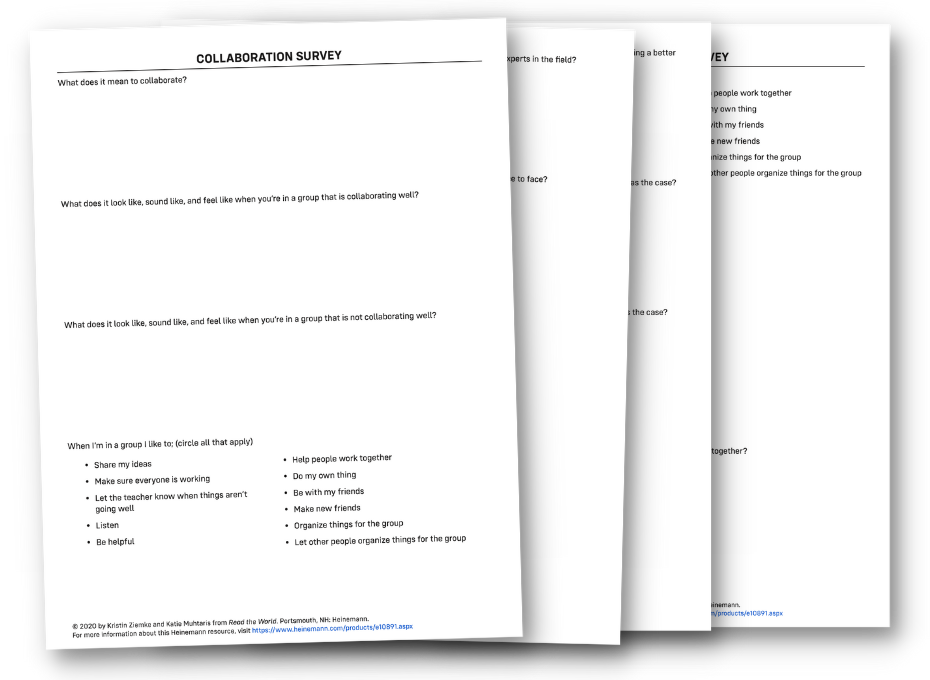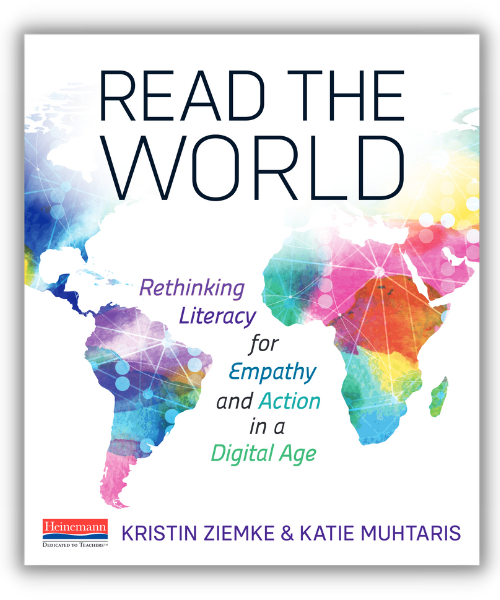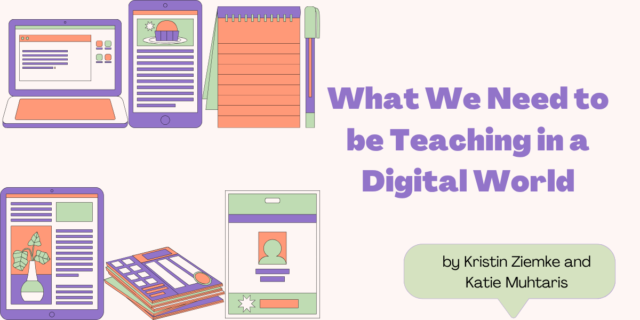
The following is adapted from Read the World by Kristin Ziemke and Katie Muhtaris.
****
Collaboration isn’t kids working quietly and peacefully at all times—it can be noisy and it often involves some push and pull among members. True collaboration requires kids (and adults!) to be thoughtful, pragmatic, friendly, and flexible in their thinking and actions. Collaborators demonstrate independence, self-sufficiency, and care in their work and their relationships with adults and peers. They listen first, ask questions, and disagree with compassion. When things go awry, they have the skills and support to correct missteps and mend relationships.
What makes collaboration possible is not the location or the students, but all of us: the teachers. Building a culture of collaboration is a process that we launch at the beginning of the year and continue to emphasize, refine, and support until students leave our care. In collaborative classroom cultures we consistently see:
- co-creation and ownership of the guidelines that dictate how students interact with each other and adults
- explicit instruction and support in when, how, and why we collaborate with others
- a culture of love, respect, reflection, and celebration that is encouraged by every student and staff member in the building.
Collaboration can supercharge the work that you are doing in your classroom: it ignites interest, adds a heightened sense of purpose to the work, and puts children in leadership and decision-making roles. But collaboration is even more powerful than what we see only in the classroom: the collaborative practices we teach leak into the hallways and playgrounds as students create self-sustaining groups and work together to solve problems and accomplish tasks.
How Can I Build and Support a Culture of Collaboration in My Classroom?
Co-create guidelines and use them. It’s not unusual for teachers to begin a school year by establishing norms with their students—a list of rights and responsibilities, a classroom agreement, or a set of expectations. When done with care, this process can also lay the groundwork for a collaborative classroom. Begin with a conversation about what collaboration can and should be, inviting students to help define what collaboration looks like, sounds like, and feels like.
To help them see the connection between the climate of the classroom and the behaviors of the people in the classroom, ask them to consider some common scenarios:
- When I’m reading, I want to feel…
- When I’m solving a difficult problem, I want to feel…
- When I’m working in a group, I want to feel…
- When I’m confused, I want to feel…
Then ask:
- What can someone else do to help you feel that way?
Other useful guiding questions to try include:
- How do you want to feel when you walk in that door each morning?
- What circumstances help you learn? Feel joyful?
- What’s something a teacher or classmate has done in the past that made your heart soar?
Invite students to jot ideas down in a notebook or shared digital tool like a Google doc or Padlet. Some teachers organize this information into a list of rights and responsibilities of collaborative work, adding in ideas that students might find helpful. Others might create a chart that lists the guidelines for collaboration and helpful language. If students have done work like this before, they might break into small groups and design their own format.
You may need to coach students away from writing rules or negative statements like “don’t talk while the teacher is talking.” This focus on negative behaviors may be something they’ve learned in other settings. However, our goal is to help them focus on their emotions so that you begin your year through the lens of empathy, with the understanding that our actions affect people.
Follow up the creation of classroom guidelines by starting to work on how students can support each other in following them. A T-chart will help students organize their thinking. Consider this something you revisit during the year as new situations arise and your students mature.
This early work that your students do will give you valuable information as to what they already know about collaboration and what you might teach them. For example, if students say that listening to everyone will help them feel like the group is respecting their thinking, we might also teach them to use specific and supportive language, make eye contact, and use nonverbal body language to validate each other’s ideas. We also use an observation checklist like this one to gather information about our students at the beginning of the year.
Once students have completed their ideas, have them share through a digital tool like Padlet so they can view and comment on each other’s work.
Alternatively, you might ask students directly about collaboration with the help of a collaboration survey. We ask students to fill these out at the beginning of each school year.
Once you’ve gathered input from students—from a T-chart, from your own observations, from a survey, or from some combination of sources—you might pull the most salient points and draft a class set of guidelines for approval by students or work with the class as a whole to create the guidelines. Once complete, these guidelines can hang in the classroom, can be signed by each student, and can be revisited (or revised) during the year as needed.


